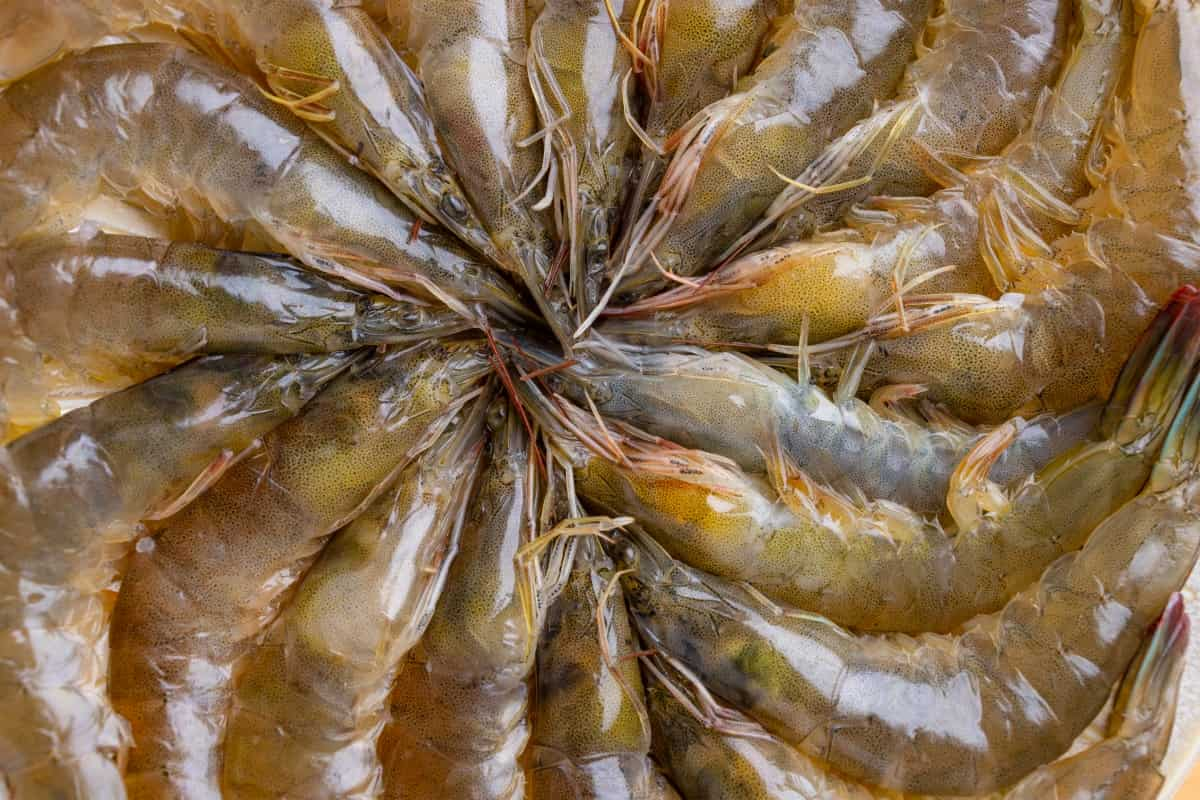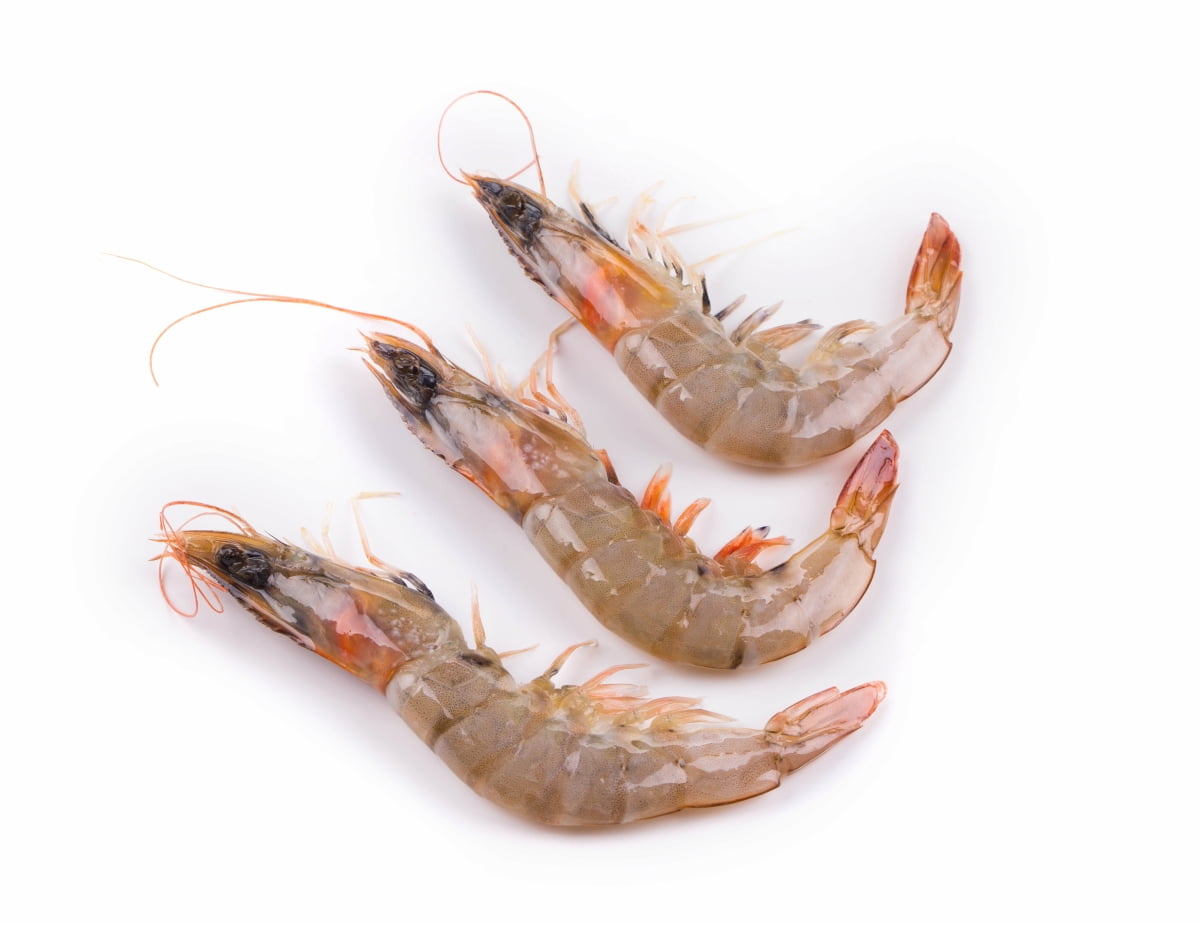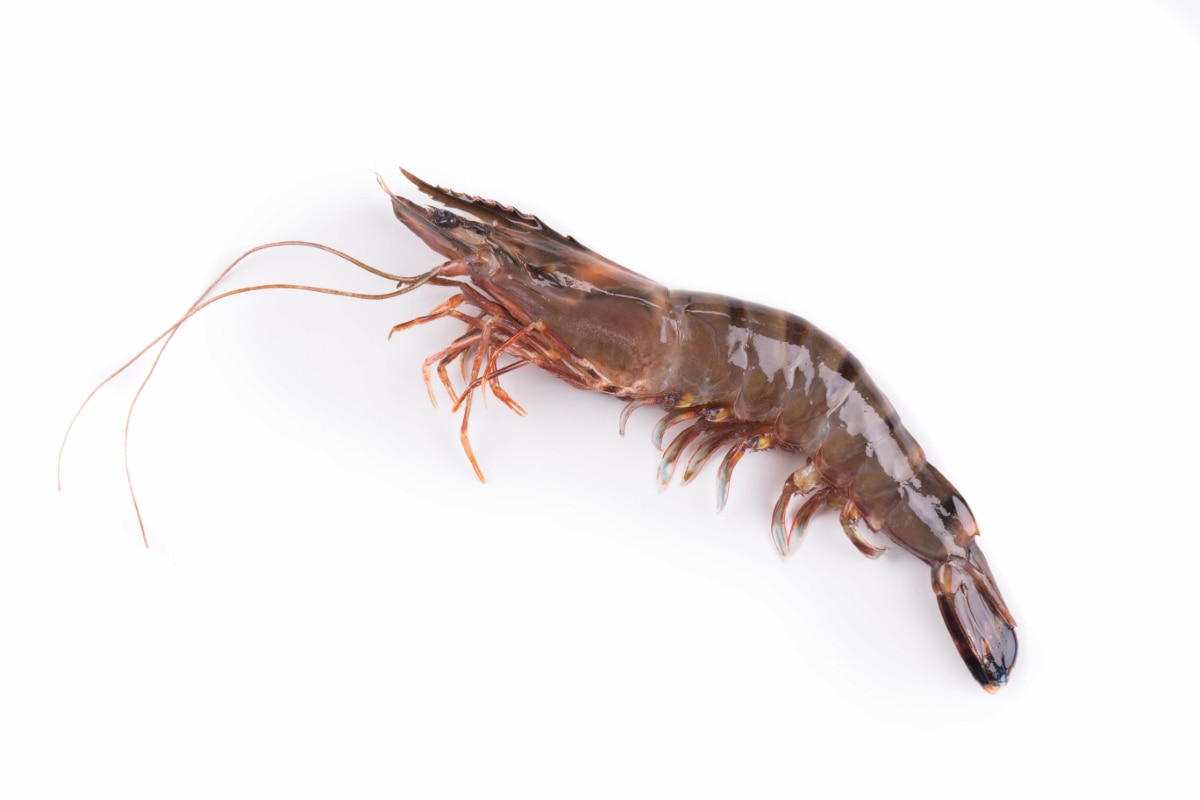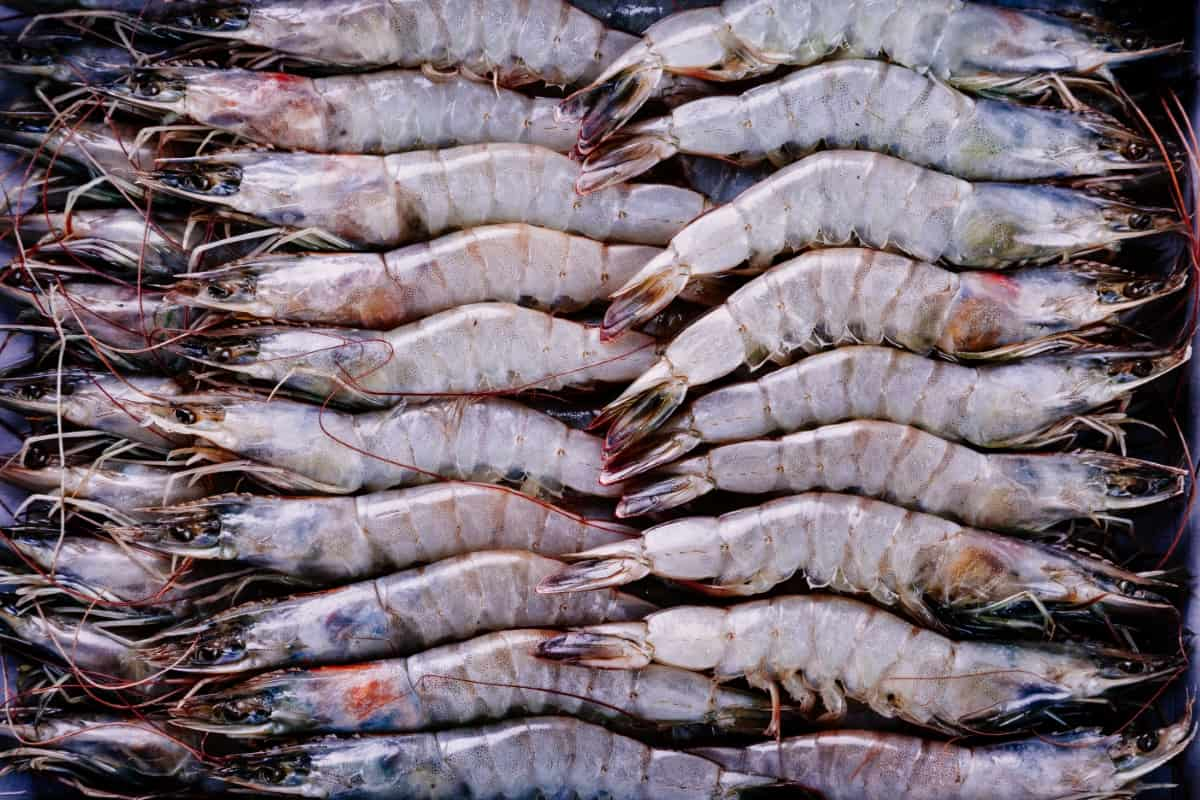Prawns are a popular seafood delicacy loved by many people around the world. However, like other living organisms, they are susceptible to various health problems affecting their growth and overall well-being. Common health problems in prawns can significantly impact their growth, survival, and overall productivity. Provide a balanced diet with high-quality feed to meet the nutritional requirements of your prawns.

Common Health Problems in Prawns
White Spot Syndrome Virus (WSSV)
White Spot Syndrome Virus (WSSV) is a common health problem that affects prawns. This viral infection can devastate prawn farms, leading to significant economic losses. WSSV infects the cells of the prawn’s exoskeleton, causing white spots to appear on their bodies. The virus spreads rapidly through water and can be transmitted by infected prawns or contaminated equipment. Once a farm is infected with WSSV, controlling and eliminating the virus can be challenging.
Prawns affected by WSSV become weak and lethargic, making them more susceptible to other diseases and infections. Preventing the introduction of WSSV into prawn farms is crucial in controlling its spread. Farms should implement strict biosecurity measures, such as screening new stock for viruses before introducing them into existing populations. Isolating infected individuals or ponds can help prevent further spread within the farm.
Vibriosis
Various species of Vibrio bacteria cause this infection and can devastate shrimp farms. The symptoms of vibriosis in prawns include lethargy, reduced appetite, slow growth, and discolored or necrotic tissues. The infected prawns may also exhibit abnormal swimming behavior and increased mortality rates. One of the main challenges with vibriosis is its ability to spread rapidly within a shrimp farm. The bacteria can be introduced through contaminated water sources or infected animals, making it crucial for farmers to maintain strict biosecurity measures.
Preventing vibriosis requires a multi-faceted approach. Farmers need to ensure proper water quality management, regular monitoring for early detection of infections, and implementing effective disinfection protocols. By understanding the risks associated with vibriosis and taking proactive measures to prevent its occurrence, shrimp farmers can minimize losses and maintain healthy populations of prawns on their farms.
Taura Syndrome Virus (TSV)
This viral infection can devastate shrimp farms, leading to significant economic losses for farmers. TSV primarily targets the digestive system of prawns, causing severe damage to their hepatopancreas. The virus interferes with the functioning of this vital organ, impairing digestion and nutrient absorption in infected prawns.
Infected prawns often exhibit symptoms such as reduced appetite, slow growth, and abnormal swimming behavior. Controlling the Taura Syndrome Virus in prawns requires strict biosecurity measures. Farmers must ensure proper sanitation practices within their ponds and prevent cross-contamination from other infected sources.
Enterocytozoon Hepatopenaei (EHP) Infection
This microscopic parasite targets the hepatopancreas, a vital organ responsible for digestion and nutrient absorption in these crustaceans. The infection of EHP can lead to various symptoms, such as reduced growth, lethargy, and poor survival rates among prawns. Management strategies for controlling EHP infection include good biosecurity measures, proper pond hygiene practices, and probiotics to enhance immune function in prawns. Regular monitoring and screening programs can also help identify infected individuals early on.
In case you missed it: Common Health Problems in Cattle: How to Prevent and Treat Them

Hepatopancreatic Microsporidiosis (HPM)
This microscopic parasite targets the hepatopancreas, a vital organ responsible for digestion and nutrient absorption in these crustaceans. The infection of EHP can lead to various symptoms, such as reduced growth, lethargy, and poor survival rates among prawns. It has been observed that this infection tends to be more prevalent in cultured shrimp populations rather than in wild ones.
Management strategies for controlling EHP infection in prawns include good biosecurity measures, proper pond hygiene practices, and probiotics to enhance immune function in prawns. Regular monitoring and screening programs can also help identify infected individuals early on. Although further research is needed to fully understand the impact of EHP infection on prawn health and productivity, it remains an essential consideration for shrimp farmers worldwide.
Yellowhead Disease
Yellowhead Disease is a devastating health problem that affects prawns, causing significant losses in the aquaculture industry. This viral disease primarily infects juvenile and sub-adult prawns, leading to high mortality rates. The Yellowhead virus targets the nervous system of prawns, resulting in various symptoms such as lethargy, abnormal swimming behavior, disorientation, and ultimately death.
Prevention and control measures for yellowhead disease in prawns include maintaining proper hygiene practices within shrimp farms, ensuring optimal water quality parameters, implementing strict biosecurity protocols to prevent infected animals or pathogens from entering ponds, and regular monitoring for early detection.
Necrotizing Hepatopancreatitis (NHP)
It is a common health problem that affects prawns. This disease primarily targets the hepatopancreas, crucial for these crustaceans’ digestion and nutrient absorption. The symptoms of NHP can vary but often include discoloration of the hepatopancreas, swelling, and necrosis. Prawns infected with NHP may also exhibit reduced appetite and poor growth rates.
Preventing NHP requires implementing good water quality management practices such as maintaining proper oxygen levels, avoiding overcrowding, and regular monitoring for any signs of infection. Quarantining new stock before introducing it into existing populations can also help prevent the spreading of diseases like NHP.
Gill-associated Virus (GAV) Infection
This viral infection primarily targets the gills of the prawns, leading to severe damage and compromised respiratory function. When prawns are infected with GAV, they may exhibit symptoms such as respiratory distress, increased mucus production in the gills, and reduced feeding activity.
Strict biosecurity measures should be implemented to prevent and control GAV infection in prawn farms. These include regular monitoring of water quality parameters, proper disinfection protocols for equipment and tanks, and quarantine procedures for new stock. Maintaining optimal water conditions and a balanced diet can help strengthen their immune systems.
Bacterial Infections
Various bacteria cause these infections and can lead to significant losses in the aquaculture industry. The most common bacterial infection in prawns is Vibrio infection. This type of bacteria can cause severe damage to the digestive system, leading to poor growth and high mortality rates. Another bacterial infection that affects prawns is Aeromonas infection, which primarily targets the gills and can result in respiratory distress and death.
In case you missed it: How to Identify and Treat Common Health Problems in Fish

To control bacterial infections in prawns, proper hygiene practices must be followed. This includes maintaining clean water conditions, monitoring water quality parameters regularly, and ensuring optimal nutrition for the prawns. It’s also important to disinfect equipment and tanks regularly to minimize potential sources of contamination.
Parasitic Infestations
Parasitic infestations can be a major issue for prawn farmers and aquaculture enthusiasts. One common parasitic infestation in prawns is caused by protozoan parasites such as Microsporidia and Gregarines. These parasites invade the digestive tract of the prawns, leading to decreased appetite, weight loss, and even death in severe cases. Another type of parasite that affects prawns is copepods. These tiny crustaceans attach themselves to the exoskeleton of the prawn, causing irritation and discomfort.
In some cases, copepod infestations can lead to secondary bacterial infections. To control parasitic infestations in prawns, it is important to maintain good water quality and hygiene practices. Regularly cleaning tanks or ponds and monitoring water parameters can help prevent outbreaks. However, it is essential to carefully follow dosage instructions and consult with a veterinarian or aquaculture expert before administering any medication.
Frequently Asked Questions (FAQ) on Health Problems in Prawns
What Are the Common Health Problems that Affect Prawns?
Prawns can be susceptible to various health issues, including bacterial and viral infections, parasitic infestations, shell disease, and nutritional deficiencies.
How Do I Identify if My Prawn is Sick?
Look for signs like lethargy, loss of appetite, discoloration or lesions on the body, unusual behavior (such as swimming upside down), and molting abnormalities.
How Do I Identify Bacterial Infections in My Prawns?
Bacterial infections often manifest as red discoloration on the exoskeleton or fins, swollen joints, lethargy, and loss of appetite. It’s crucial to monitor your prawns closely for any signs of infection.
How Does Nutrition Impact the Overall Health of Prawns?
Proper nutrition is vital for maintaining healthy immune function in prawns. A balanced diet rich in essential nutrients ensures their growth and resistance against diseases.
In case you missed it: Common Health Problems in Pigs: How to Prevent and Treat Them

Conclusion
Health problems affect individual prawns and can spread throughout an entire population, causing widespread damage and economic losses for shrimp farmers. By diligently implementing these control measures, regular monitoring, and proactive management, you can significantly reduce the risk of health problems in Prawns.
- Types of Fungicides Used in Agriculture
- Common Issues in the Fruit Development Stage of Pomegranate Farming
- Fruit Development Issues in Papaya: Easy Solutions and Treatment
- Soil-Borne Diseases and How to Protect Your Plants
- Practices to Prevent Disease Spread in the Garden
- From Wilted to Thriving: How to Treat Root Rot Naturally in Houseplants
- Natural Remedies to Cure Brown Spots on Fig Tree Leaves
- Natural Solutions for Poinsettia Problems: 100% Effective Remedies
- How to Control Calla Lily Problems: Natural Remedies for Leaf and Flower Problems